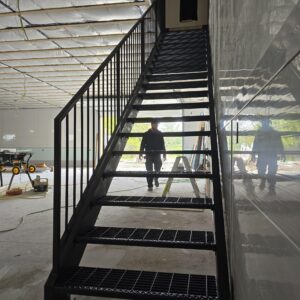
Our expert welders and metalworkers can install interior height code compliant railings, which include handrails and guardrails in residential and commercial properties. This is important because the homeowner or entrepreneur may face sanction or their application for housing permit will be rejected for violating the building code.
The problem is that the specifications listed in the local building code manual are very specific. For example, the space between the railing and the wall, the size of the handrail for firmer grip and support, and the height of the guardrail to protect especially kids and pets need to be accurate down to the last inch. The location and distance of the handrail in relation to the steps, platform and the floor is also outlined in the code.
Railings should be installed on stairways, balconies, raised platforms, walkways, and ramps. For commercial spaces, railings should serve as support for the disabled, the visually impaired, and the elderly who have trouble with their mobility.
Fortunately, Art Metal has been in the business for about 20 years and we know the ins and outs of the law in Toronto. This is why you can be confident that we can properly install interior height code compliant railings, and get it right the first time.
Our expert technicians will give you peace of mind knowing that when the building inspector comes along, your guard railings will be height compliant.
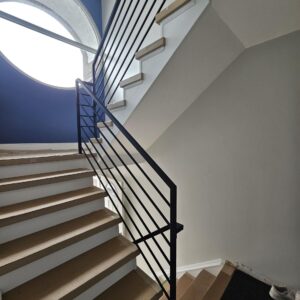
[widget id=”nav_menu-23″]
Our Interior Railing Completed Projects
Canada Interior Railing Height Code and Why You Need to Know It
There are many factors to consider when you install an interior railing. Unfortunately, most people are so focused on the price, look, and material that they forget about the most important of them, which is safety. The purpose of the interior railing height code is to help you make your home safer. Therefore, you definitely need to study these regulations before deciding on the design of the railing.
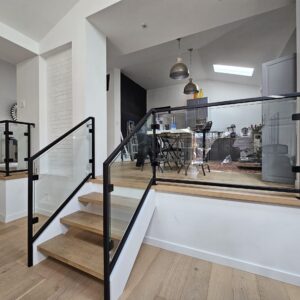
Interior Railing Height Code Ontario: Basic Regulations
Railings and handrails are installed to serve as support (stairs) and protect against a potential fall. Note that graspable handrails can be installed not only along the stairs or balconies but also around toilets or bathtubs. These fixtures may be necessary for people with disabilities and they serve as a handy protection from falling if you slip on wet floors.
Ontario building safety regulations require the installation of railings on decks, balconies, stairs, and landings. Interior balcony railing height code isn’t set in stone as indoor balconies are a custom design feature. However, it’s advised to follow the general regulations, which means that any interior railing height should be between 32 and 36 inches.
As Art Metal Workshop is an experienced and licensed Toronto railing service, we would help you choose the safest system design that would comply with the community building codes.
Why Interior Railing Height Matters
Technically, you can choose the interior railing height that doesn’t match the code as these regulations aren’t actually a law. As long as the local building official provides you with a permit, the design is a go.
However, you should never risk your own and your family’s safety over the looks of your railing system. The interior railing height code BCis created for your protection. These constructions must be over 32 inches high because this is the optimal size that can help stop the fall of a person, regardless of their own height. They also must be under 36 inches as otherwise, grasping the handrail with your hand would be uncomfortable.
Stairway Railing Height Standards in Toronto
Whether you install metal, wood, or glass staircase railing, the safety regulations are the same. Stairways that have over four risers or are higher than 30 inches must have railings installed on each side, unless one of them is a wall.
The interior stairway railing height code in Toronto dictates that the optimum railing height is between 34 and 38 inches. Art Metal Workshop experts are aware of all the local building laws and codes, so we know how to create interior railings that are both beautiful and safe.
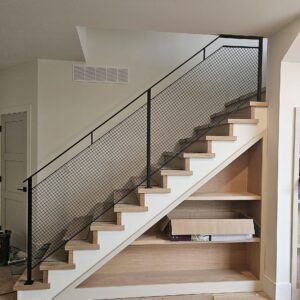
FAQs
What is the required height for interior railings in Ontario?
The Ontario Building Code mandates that interior railings must be at least 36 inches high for residential properties. This measurement is taken from the floor to the top of the railing. Ensuring this height helps to prevent falls and provides adequate support for users.
Are there specific spacing requirements for interior railings in Ontario?
Yes, the spacing between balusters (the vertical posts) in interior railings should not exceed 4 inches. This spacing requirement prevents small children from slipping through and ensures the railing provides effective protection.
Do interior stair railings have different height requirements?
Interior stair railings must be between 34 inches and 38 inches high, measured from the nosing of the stair tread to the top of the handrail. This height range ensures that the handrail offers proper support and safety for individuals using the stairs.
What are the load-bearing requirements for interior railings in Ontario?
According to the Ontario Building Code, interior railings must be able to withstand a concentrated load of 200 pounds applied in any direction along the top of the rail. This requirement ensures that the railing is strong enough to provide reliable support and safety under typical use conditions.





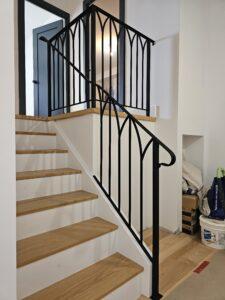

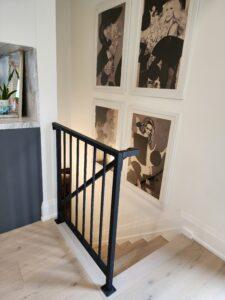
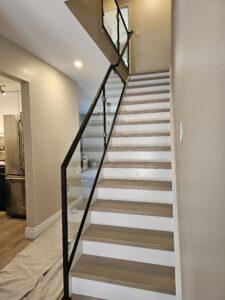

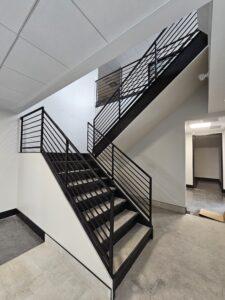







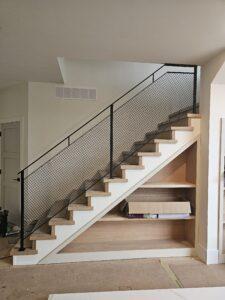




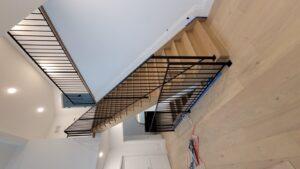






















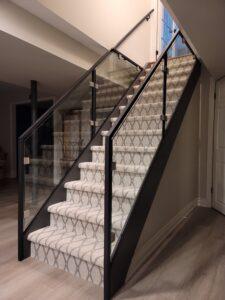










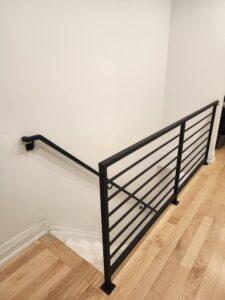




 Chat
Chat 








